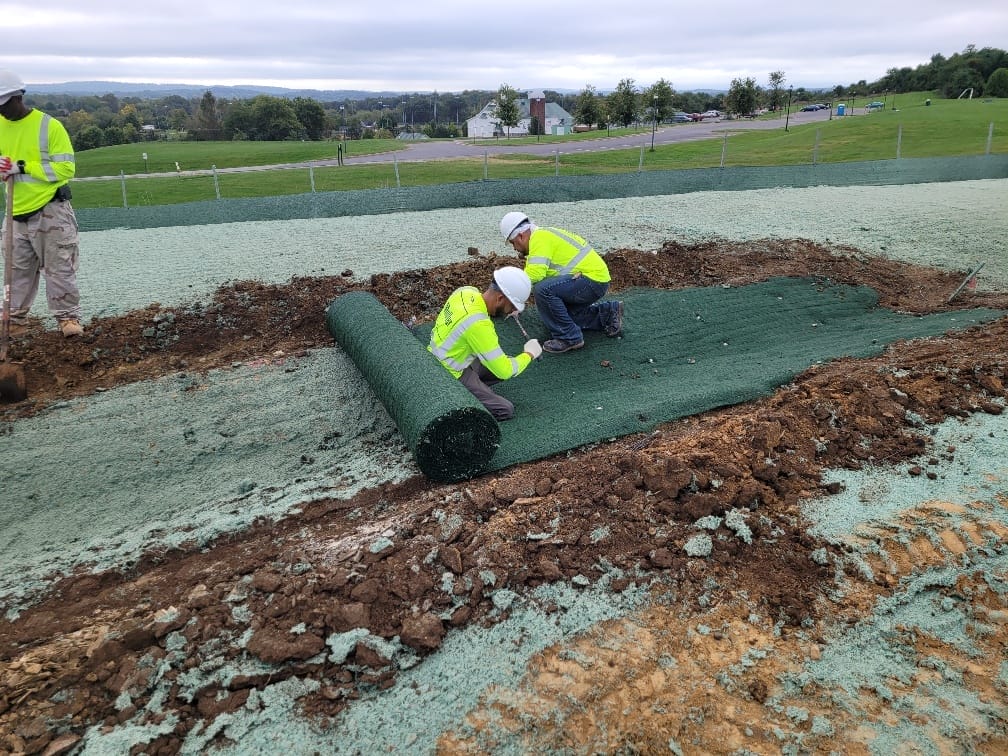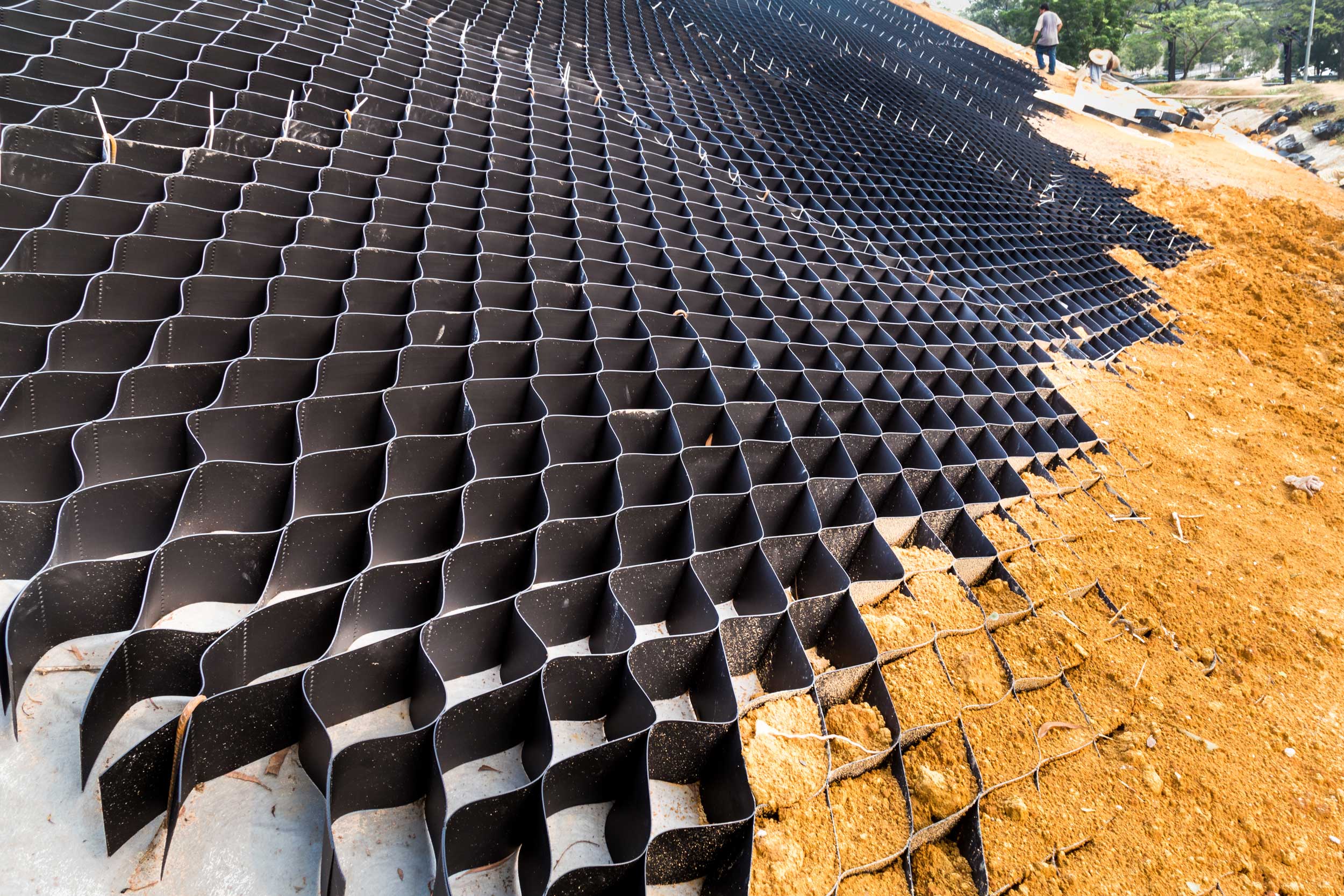Memphis Erosion Control Solutions Memphis TN: Your Regional Erosion Control Professionals
Wiki Article
Finest Practices for Disintegration Control in Building Projects
Are you functioning on a building job and worried about disintegration control? In this write-up, we will assist you via the best methods for preventing disintegration on your website. Memphis Erosion Control Solutions erosion control company. Obtain prepared to take on erosion head-on and make sure the success of your building task.5 Necessary Erosion Control Techniques

To effectively manage disintegration on your building site, you'll require to execute important methods such as slope stablizing and sediment control steps. Slope stablizing is important in stopping dirt erosion on steep inclines. You can achieve this by utilizing methods like terracing, which involves developing horizontal steps on the incline to reduce water circulation and advertise the absorption of rainwater. An additional reliable technique is the usage of disintegration control coverings or mats, which are positioned on the incline and assistance retain soil fragments while permitting greenery to grow. Debris control actions are likewise important to stop debris overflow right into neighboring water bodies. One efficient method is the setup of silt fences along the boundary of the building and construction website. These fences act as obstacles, catching sediment-laden water and enabling it to resolve before it reaches the water bodies. Furthermore, you can use sediment basins, which are short-term retention ponds designed to trap debris and enable water to slowly drain off. Carrying out these crucial erosion control strategies will aid minimize the negative ecological impact of your construction project and make sure compliance with guidelines.
Effective Debris and Runoff Monitoring

You can properly handle debris and runoff in your building and construction project by executing appropriate erosion control procedures. Debris and overflow administration is essential to avoid erosion and secure the surrounding environment. One effective procedure is the installation of silt fences along the boundary of the building site. These fencings aid to have debris and stop it from getting in neighboring water bodies. An additional crucial practice is the implementation of erosion control blankets or floor coverings. These blankets provide a protective layer on bare dirt, minimizing the impact of rainfall and preventing disintegration. Furthermore, using debris containers or debris traps can help to record debris and prevent it from entering stormwater systems. Regular upkeep of these measures is important to ensure their performance throughout the building project. This consists of cleaning up and examining sediment basins and routinely replacing silt fencings and disintegration control blankets as needed. By implementing these disintegration control actions, you can efficiently manage sediment and overflow in your building job, decreasing the influence on the atmosphere and abiding by regulative demands.
Trick Considerations for Slope Stablizing
You need to carefully analyze the incline's features, such as its drainage, structure, and angle patterns. Look for indicators of disintegration, such as exposed roots, splits, or down soil.Once you have determined the unstable locations, you can start implementing procedures to maintain the slope. One common technique is using keeping wall surfaces or terracing to create a collection of flat steps, which can help distribute the weight and protect against further erosion. An additional alternative is to grow greenery on the incline, as the roots can help anchor the soil and control erosion. Additionally, setting up disintegration control coverings or floor coverings can provide instant defense while vegetation ends up being established.
It's important to regularly monitor the stabilized slopes to ensure their effectiveness. Watch out for any kind of indications of movement or disintegration, and take prompt activity if needed. Routine upkeep, such as evaluating and fixing any type of broken measures, is additionally necessary to make certain long-lasting stability.
Ideal Practices for Vegetation and Soil Protection
One efficient way to secure vegetation and dirt on inclines is by frequently checking for indications of disintegration and taking instant activity if essential. By being aggressive and observant, you can avoid additional damages and guarantee the security of the incline. Beginning by checking the incline for any kind of signs Go Here of disintegration, such as subjected check this roots, bare dirt spots, or sediment accumulation near the bottom. It is vital to attend to the problem immediately if you discover any of these indications. Implement disintegration control steps such as setting up disintegration control coverings, mulching, and even constructing keeping walls if needed. Furthermore, growing greenery can considerably assist in maintaining the dirt. Pick native plants that have deep root systems, as they are a lot more effective in avoiding disintegration. See to it to on a regular basis examine the health and wellness of the plants and offer essential upkeep, like watering and feeding. Bear in mind, disintegration can rapidly aggravate and cause serious damage, so it's necessary to resolve it as soon as feasible. By taking positive measures and on a regular basis keeping track of the slope, you can safeguard the plant life and soil, guaranteeing the lasting security of the area.Carrying Out Appropriate Water Drainage Equipments
When it comes to managing water circulation and protecting against disintegration, understanding these variables is essential. Steeper slopes can lead to quicker water flow, boosting the risk of erosion and flooding. On the other hand, gentler slopes permit water to stream much more gradually, decreasing disintegration possibility.Dirt type also affects water drainage system design. Different soil kinds have differing degrees of leaks in the structure, affecting exactly how water is absorbed and drained pipes. As an example, sandy soils tend to drain faster due to their crude appearance, while clay dirts have a slower water drainage rate because of their small nature. Comprehending the soil type helps in selecting ideal water drainage methods, such as utilizing absorptive materials or mounting French drains. Furthermore, considering the dirt attributes helps avoid waterlogging, which can cause inadequate plant development and damage to structures.
Verdict
In final thought, when it comes to disintegration control in building and construction jobs, read this post here you should comply with these best methods. Take into consideration incline stabilization techniques to guarantee the security of the website. By complying with these important techniques, you can efficiently control disintegration and make sure the success of your construction project.To successfully manage disintegration on your building site, you'll need to execute vital techniques such as incline stablizing and debris control steps. Slope stabilization is crucial in avoiding dirt erosion on steep inclines. An additional efficient strategy is the usage of erosion control coverings or floor coverings, which are positioned on the slope and help retain dirt fragments while permitting plants to grow. One more alternative is to plant greenery on the incline, as the origins can assist secure the soil and control erosion. Implement erosion control steps such as mounting erosion control blankets, mulching, or even constructing retaining walls if needed.
Report this wiki page